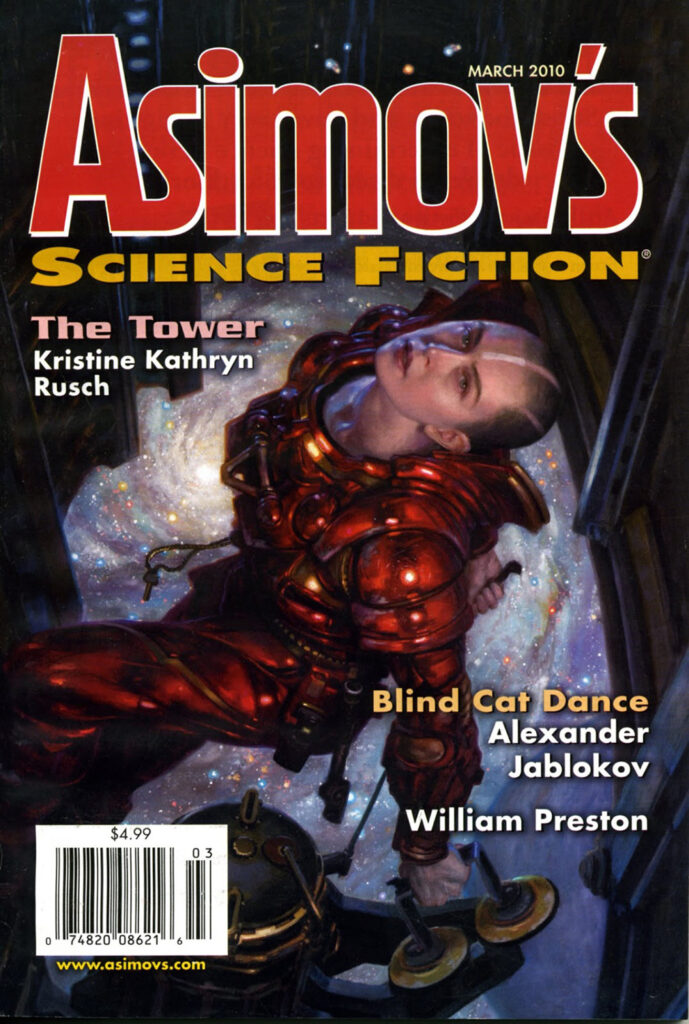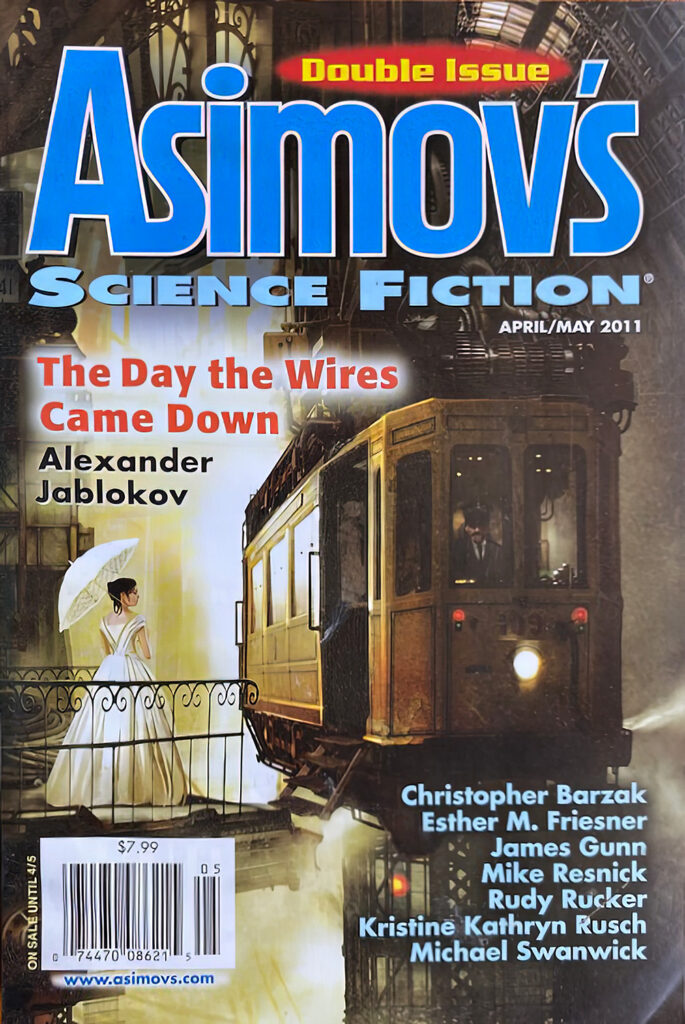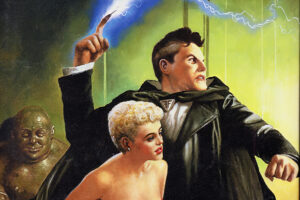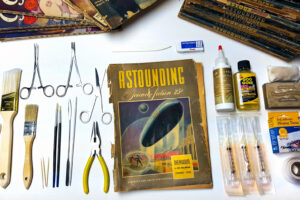A self-imposed Q&A about William Preston’s ‘pulp’ hero
In 2010, my novelette “Helping Them Take the Old Man Down” appeared in Asimov’s Science Fiction magazine. Inspired by Argentinian novelist Pablo De Santis’s novel The Paris Enigma and set in a world in which internationally renowned fictional detectives are based on actual people, the novelette was an homage to Doc Savage that placed such a pulp character in the modern world.
In 2011, I followed that story with another novelette in Asimov’s, “Clockworks,” which took place in 1962; then came 2012’s novella “Unearthed,” taking readers back to 1925 and my character’s first “adventure.” All three stories are available in e-book form via Amazon. Two more stories, both sequels to the original tale, are in the works.
Recently, I sat down with myself to discuss these stories.
Q: When you planned “Helping Them Take the Old Man Down,” did you have any idea you were starting a series of stories?
None. It was like the opening of a suspense novel: “Little did he know how events would unfold.” I operated in ignorance, which turned out in my favor. I had no idea until after my story appeared how often Doc Savage had been used as a template or repurposed in published fiction and fan fiction. I also had no idea so many people still connected with pulp heroes, or that there still was a market for the original stuff as well as for newer works. And I certainly had no plan to write a five-story arc. One and done: that was it. So I had no sense of a particular audience or a larger story.
Fanzine flashback
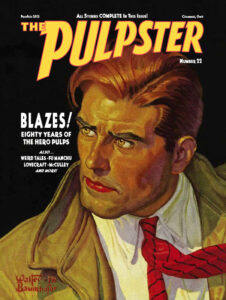 This article originally appeared in The Pulpster (#22) for PulpFest 2013. Reprinted with permission.
This article originally appeared in The Pulpster (#22) for PulpFest 2013. Reprinted with permission.
Q: Was your aim to tell a new Doc Savage story without using the name?
My initial impulse was to dramatize some questions about heroic figures in general, questions to which I didn’t have immediate answers: What’s it like to work for a character like this? How does he run such an organization? What kinds of cases earn his attention? How secret are his activities? What do the authorities think? What should the rest of us think?
The lenses through which I examined those questions were post–9/11 lenses: The country is on high alert; we’re looking for people to blame; the government starts making lists, or examining old lists; ideals have given way to fears.
In the end, the model for thinking about the character’s purpose was probably less Doc Savage than Superman, particularly the Man of Steel I remembered from Superman #247, Elliot Maggin’s famous story in which the Guardians from Oa put into Superman’s head the question of how much he should be doing for humanity. That story suggests it’s okay for Superman to address huge natural disasters and criminal behavior, but not necessarily social injustice. Although the Guardians want the Man of Steel to calibrate his impact on human society, to me the story raised the question, “What can Superman actually fix?” (Watchmen runs this inquiry in a radically different direction, giving the American government Doctor Manhattan, a “superhero” who can shut down any war, becoming a tool for foreign policy who is uninterested in ordinary human suffering.) Obviously, there’s a theological analogy at work in such a story regarding God’s response to prayer and the seeming arbitrariness of divine will. It’s the post-Holocaust question of Elie Wiesel: What are God’s priorities if he’ll respond to simple personal requests, but not prevent the devastation of European Jews?
The Old Man in ‘Asimov’s’
William Preston’s “Old Man” stories were all originally published in Asimov’s Science Fiction digest:
- “Helping Them Take the Old Man Down” (March 2010)
- “Clockworks” (April/May 2011)
- “Unearthed” (September 2012)
- “Each in His Prison, Thinking of the Key” (April/May 2014)
- “To Make an End” (May/June 2024)
Q: Did you intend to emulate old pulp tales?
I hadn’t read an old pulp story since the ’70s. And even then, though I once owned a fair number of Doc Savage books, I didn’t read more than a few. I loved the first Doc Savage I read, “The Czar of Fear,” and I enjoyed “The Black Spot”; but though I took the character — as an idea and a set of images — quite seriously (which is why I found the movie so frustrating), I wasn’t a big fan of the books. I did read almost the entire reprinted run of The Avenger, including the new Ron Goulart stories.
When I started writing “Helping Them Take the Old Man Down,” I elected not to read or re-read any Doc Savage. One of the story’s themes is our dicey relationship to our memories — that’s a theme that runs through all of the existing Old Man stories — so it’s fitting that I went by my vague memories of those tales. Additionally, I knew my narrator’s voice in the first story was reserved and educated rather than hard-boiled and streetwise, so following any of the narrative stylings of those stories would have given mine a false tone. I wanted to tell an adventure story with an exciting climax, but the voice would remain thoughtful.
Q: When you wrote about the Old Man, did you picture Doc Savage?
First off, you have to consider what “picture” I might have been working from. The images I had were from the Bantam paperback covers, with their various artists — and that version became the model for the several comic book versions, though Doc looked less weathered in the comics — and the original pulp covers, also by various artists. If anything, my mental image for the Old Man was closer to the Bantam covers, but more because that guy appears almost elderly than because of anything specific about the face and build. While writing, I had a rather vague image in mind; I referenced some language I recalled from the books but didn’t give readers the clearest picture. That’s in keeping with the whole approach of the story, since Lanny, the protagonist, is reconstructing half-remembered events. He even says that working for the Old Man often entailed doing some parallel task at which the Old Man wasn’t present, so it’s not like Lanny spent a great deal of time with him. For the purposes of that story, I keep the Old Man obscured; even in the tale’s final battle, everything takes place at a distance, though it’s the one scene in which we see the Old Man in what amounts to the present day.
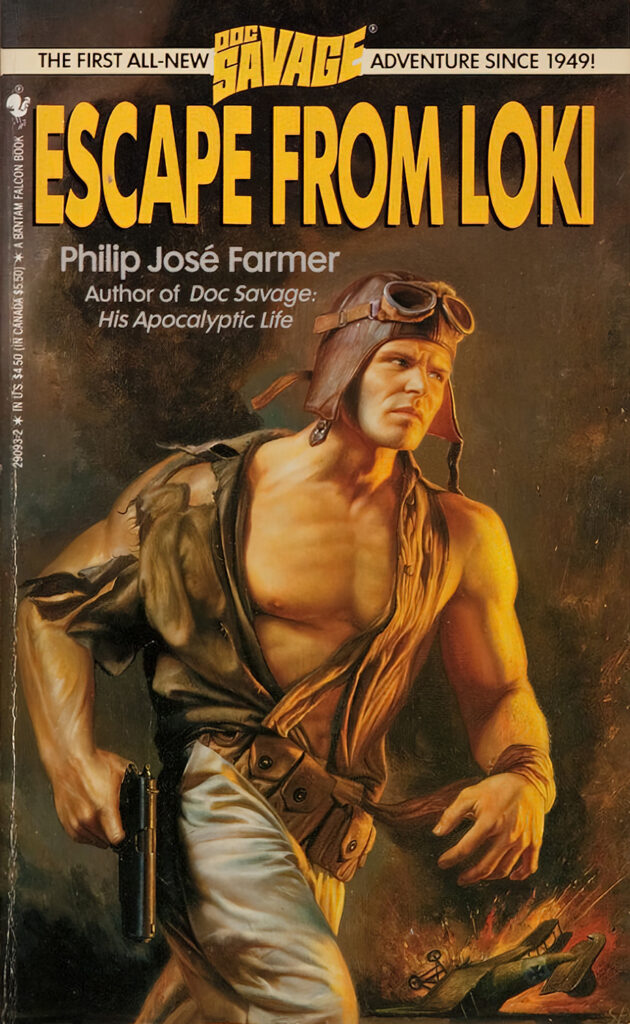 For the second story, I did have something more like the familiar Bantam Doc visually in mind. For the third story, I was working from my own imagery. My young version of the Old Man looks nothing like any of the Doc images I’ve seen. The fellow on the cover of Escape From Loki comes closest, but I didn’t see that until afterward.
For the second story, I did have something more like the familiar Bantam Doc visually in mind. For the third story, I was working from my own imagery. My young version of the Old Man looks nothing like any of the Doc images I’ve seen. The fellow on the cover of Escape From Loki comes closest, but I didn’t see that until afterward.
Q: What about readers with no exposure to Doc Savage? Do they need that background to appreciate the character?
Certainly, people who get the reference have a context in which to place these stories. I hope it’s not necessary — as with all the people who enjoy The Lion, the Witch, and the Wardrobe and have no idea Aslan is a Jesus analogue — but you’re missing a fat layer of pleasure if you don’t know what I’m responding to. Reviewers of the stories have varied in their responses: some think the character is Doc Savage (and they either appreciate that or, in one case, feel I’ve stripped away something); some see it in the way I intended, as an homage; some don’t know the reference, and they either think the stories are cool anyway or wonder what’s going on. One reviewer said the story was clearly about Superman because of the Arctic base, and I’m fine with that view.
All through the writing process, I’d planned to send “Helping Them Take the Old Man Down” to Sheila Williams at Asimov’s, since she’d published two previous stories of mine, but then I had the misguided notion that the story was a better fit elsewhere. When the reader at that venue rejected it, I figured the reader simply didn’t get the character reference, which suggested to me something about the person’s age, but also made me realize that the character wasn’t as recognizable as I’d believed. (It’s possible the reader simply didn’t like the story, but my view is that it was solid enough to at least have been passed up the editorial ladder.) The rejection allowed me to fix a few things, and then I sent it to Asimov’s, where it was accepted and where it belonged. I’ve kept in mind, though, that the stories need to stand on their own even as they keep the Doc connection alive — and as they get intertwined with each other.
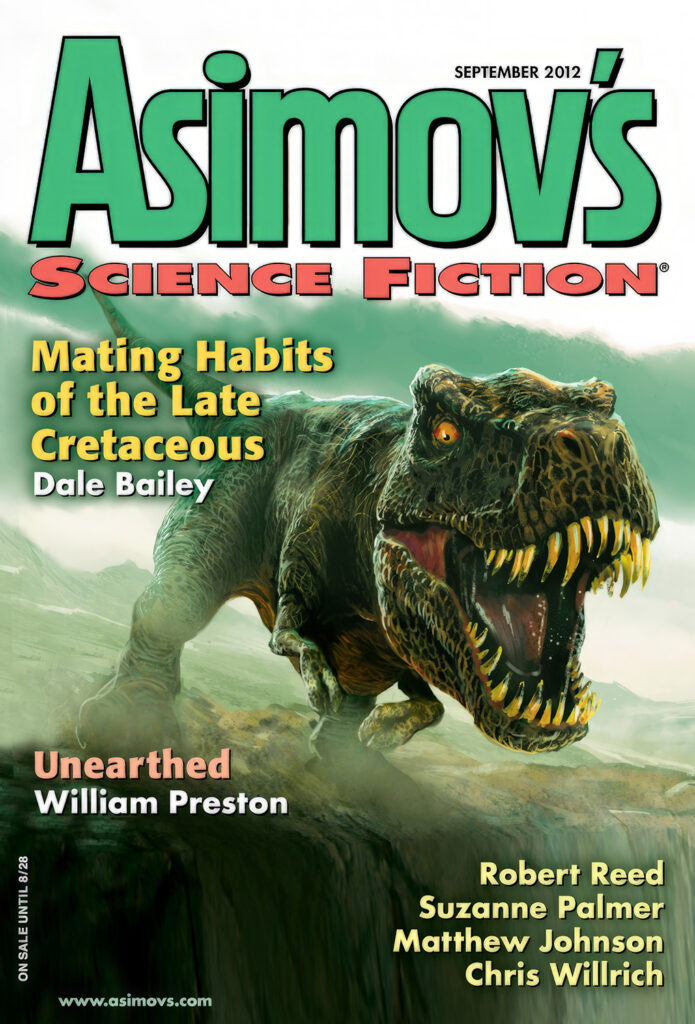 Q: If you only intended to write the first story, what led you to write more?
Q: If you only intended to write the first story, what led you to write more?
“Helping Them Take the Old Man Down” is a sealed, intact story. You’ve been given glimpses of the past and you have some sense about what the future might hold. Yes, the story raises questions it doesn’t directly answer, but I was satisfied with the answers it implied and with leaving many things up to the readers’ imaginations. A short story is always a segment of the sidewalk, not the entire path. The concrete stops short and you leave characters on a kind of precipice. That’s an effective piece of short fiction.
But some readers asked whether there would be more stories. And once that idea wolverined its way into my brain, several more ideas came to me. There would have to be a story in which the Old Man, now imprisoned, was released. And I’d have to plunge into the past to explain some mysteries I’d planted for myself.
Q: Why choose those particular time periods?
I know one thing that led me to place the first in 2001-02 was the idea that, if Doc Savage had had headquarters in the Empire State Building, my guy would have to have been in the World Trade Center towers. Of course, he’s not there when they collapse, which leads to the government’s suspicion about what he knew and when he knew it.
My protagonist worked with the Old Man in the ’70s and ’80s, well past the time period of the Doc Savage stories, allowing me to avoid that era. Though I made mention of the Old Man’s adventures in the ’30s and ’40s, I said that the pulp novels containing his adventures were a mixture of truth and fiction, thus distancing my character from that set of narratives.
As initially conceived, the next story (“Clockworks”) was to be a pas de deux, a mental dance between the Old Man and a villain whose mind he’d repaired. This Doc Savage concept of an operation that “cured” people of criminal behavior was referenced (I believe to somewhat disturbing effect) in “Helping Them Take the Old Man Down.” I wanted to work it through dramatically, and the template that seemed most relevant was Anthony Burgess’s A Clockwork Orange, which raises questions about good behavior and free will. The novel also provided me with a title, a recurrent motif, and, as I worked through the drafts, a way to organize the story, using terminology from timepiece components.
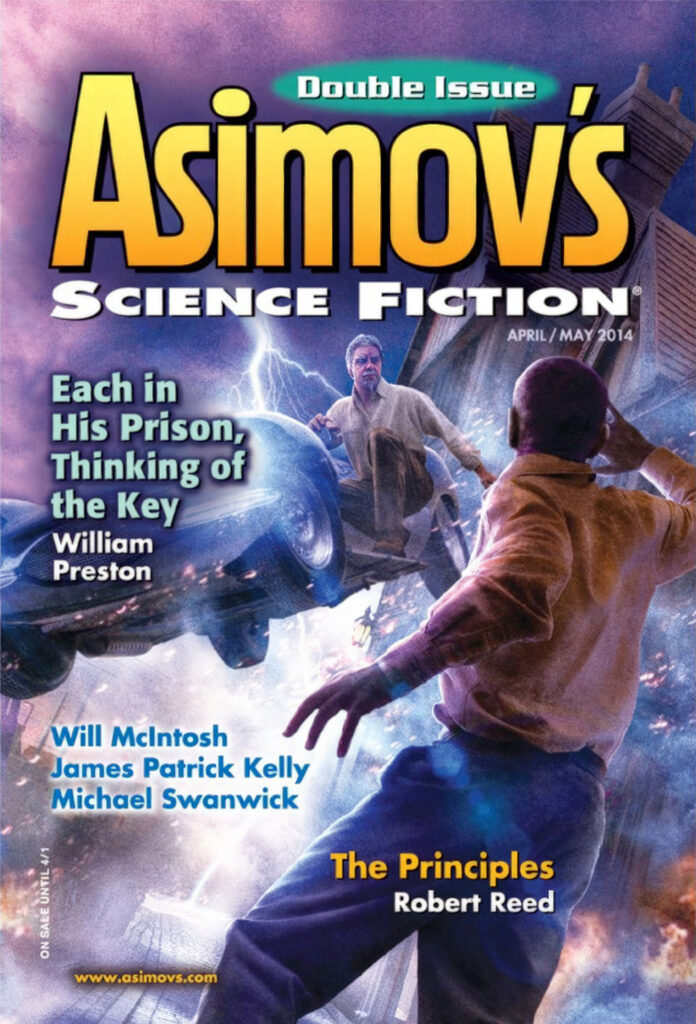 I wanted to push that story back to the Cold War, so my villain could have done mind-control experiments for the Soviets. The year 1962, the year I was born, allowed me to place the reader at a crucial time — the Soviets are in space, the Cuban missile crisis is approaching, and Kennedy will be alive for another year. A friend of mine had bemoaned my killing off the one black character in the previous story, Randy, the engineer; 1962 allowed me to bring him back, and, as the story developed, the character brought others with him, including a friendly foil and some family members. “Clockworks” took on a different shape than I’d intended, while still addressing the ideas of free will and choice.
I wanted to push that story back to the Cold War, so my villain could have done mind-control experiments for the Soviets. The year 1962, the year I was born, allowed me to place the reader at a crucial time — the Soviets are in space, the Cuban missile crisis is approaching, and Kennedy will be alive for another year. A friend of mine had bemoaned my killing off the one black character in the previous story, Randy, the engineer; 1962 allowed me to bring him back, and, as the story developed, the character brought others with him, including a friendly foil and some family members. “Clockworks” took on a different shape than I’d intended, while still addressing the ideas of free will and choice.
Going back to 1925 for the third story allowed me to leap over the Doc Savage era, so my character could both avoid a direct contradiction with Doc while still being a kind of stand-in for him. Nevertheless, this also gave me the opportunity to establish more clearly my character’s individuality and complicate his context, making his superheroic narrative less of an obvious outcome for his life. I knew it would be the early 1920s because I wanted us to see the Old Man at a time when his schooling is finished but he hasn’t begun on his formal “mission,” as I conceived it. I don’t think I knew the exact year until I had Little Boss — the Old Man’s name in this adventure — reference a poem by Yeats.
It’s important to add here that the stories read best, I believe, when you read them in the order of composition rather than in chronological order.
Q: What’s the Old Man’s actual name?
I’ve got a Schrödinger’s cat scenario going. As long as I don’t tell you his name, you can still think of him as Doc Savage or, more accurately, the real person on whom Doc is based; as soon as I give him a name, the jig is up. I’ve played with readers by giving him a different nickname, or even multiple nicknames, in each story. In the next story, he’s back to being the Old Man, and in the final story, someone’s going to ask him his name, and … well, you’ll see. I think I’ve found a clever solution.
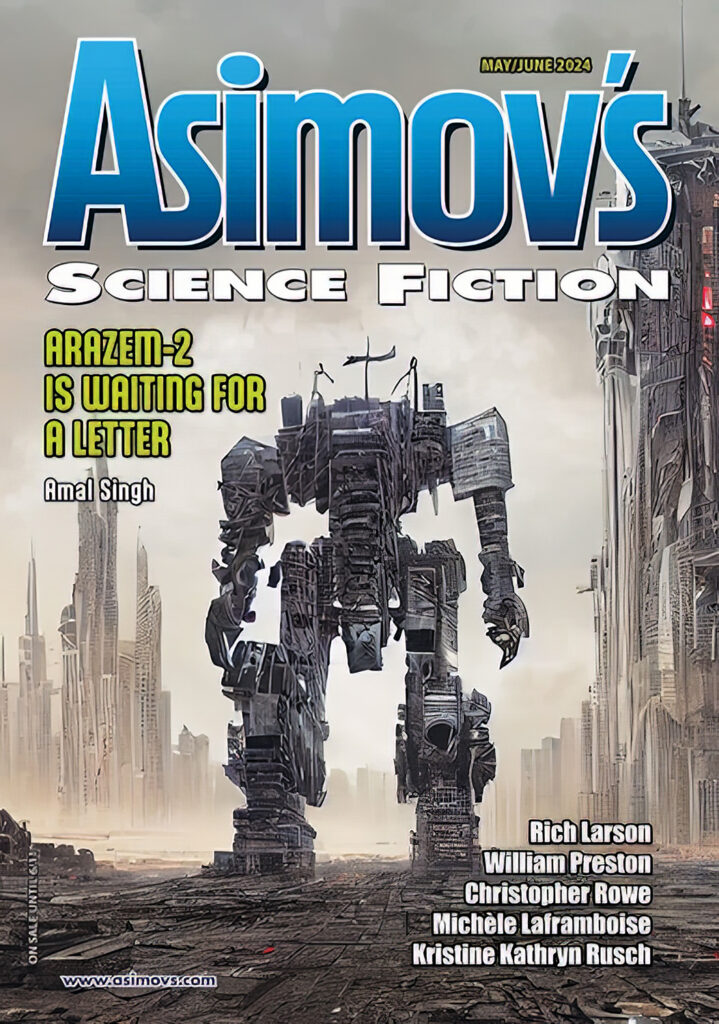 Q: Where are the stories going next?
Q: Where are the stories going next?
The next story takes place in 2005-06 and involves, necessarily, freeing the Old Man from federal incarceration. The story involves two timeframes, and the key to making the story work is having both timeframes play off each other while working toward simultaneous resolutions. The story has gone through a host of titles, so I’ll spare you the current one. One fun element the story explores is those pulp stories about the Old Man character.
The final story, for which I’ve written several scenes, takes place in the future, when someone decides to summon the Old Man from wherever I’ve been keeping him to fight one final battle. I’m keeping the details to myself for now, but the title is “The World Will Be the World Again.” [Editor’s note: The final story is actually titled “To Make an End.”]
Q: When will the next story be out?
Midway through drafting the fourth story, I took a break to write both a non-genre piece of fiction, which I’m currently trying to sell, and a non–Old Man tale, “Vox ex Machina,” which is forthcoming in Asimov’s. I suppose, in part, I was postponing work on this difficult story, but it’s more that other ideas have come to me, and I’ve needed to take care of them. These Old Man tales all have long germination periods, and they profit by it. What they look like when they first occur to me is nowhere near as interesting as what they look like when they’re finished. That’s an effect of time, which allows further thought, but it’s also an effect of needing to surprise myself as I work, needing to push the story in directions I didn’t originally see.
Q: You’d better get to work.
Agreed.
About the author
William Preston is a writer whose Old Man stories may or may not be homages to Doc Savage. He formerly taught English, creative writing, and film studies at a small independent school outside Syracuse, N.Y.


